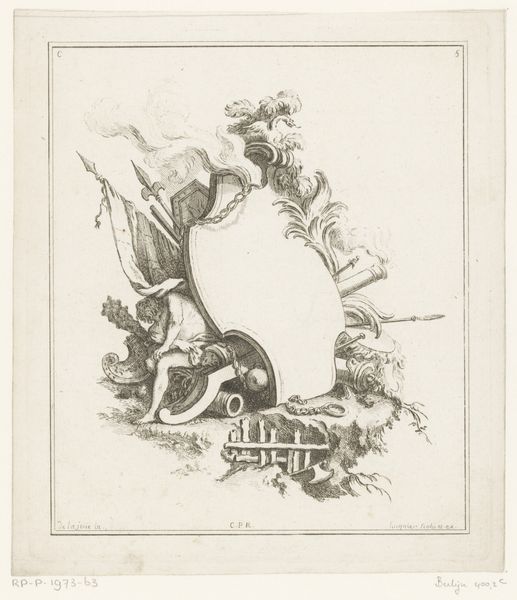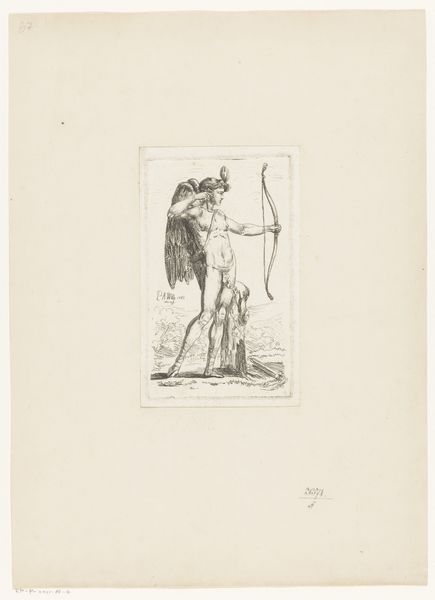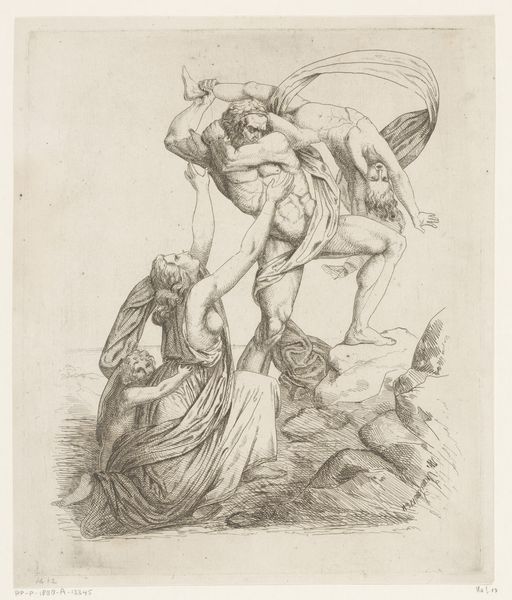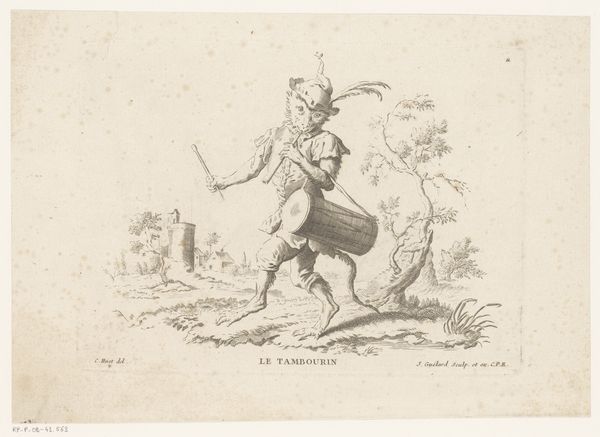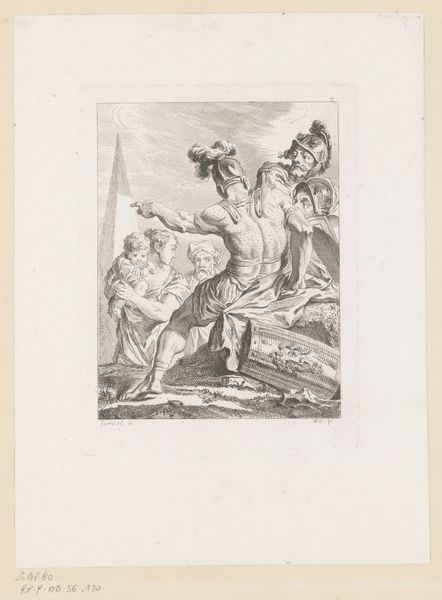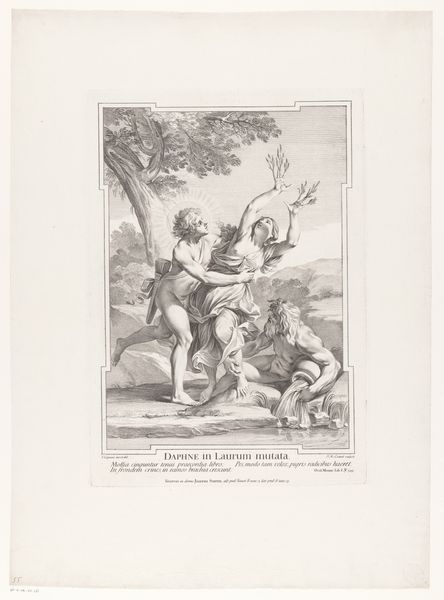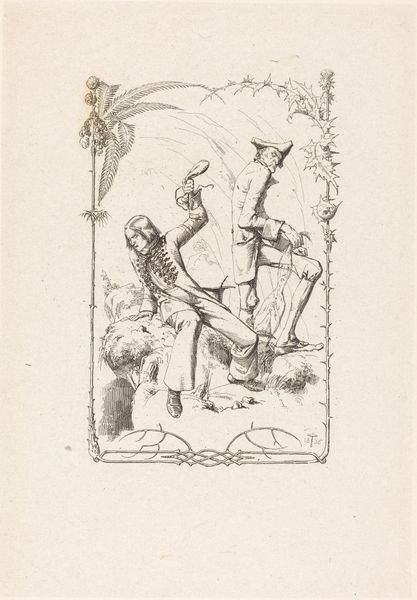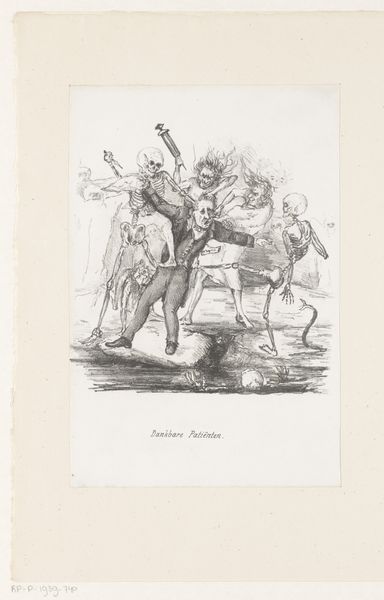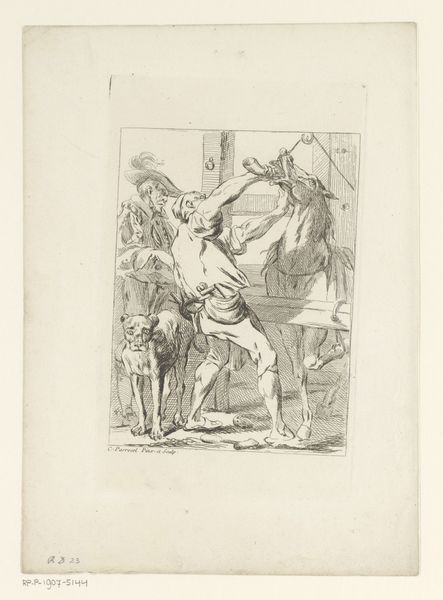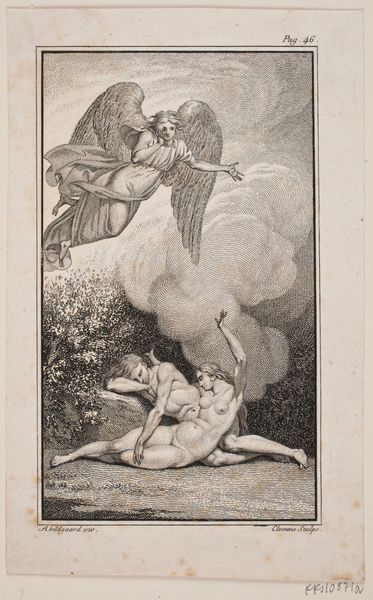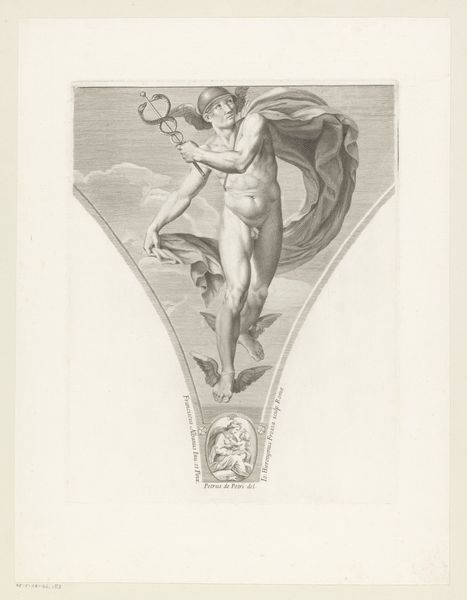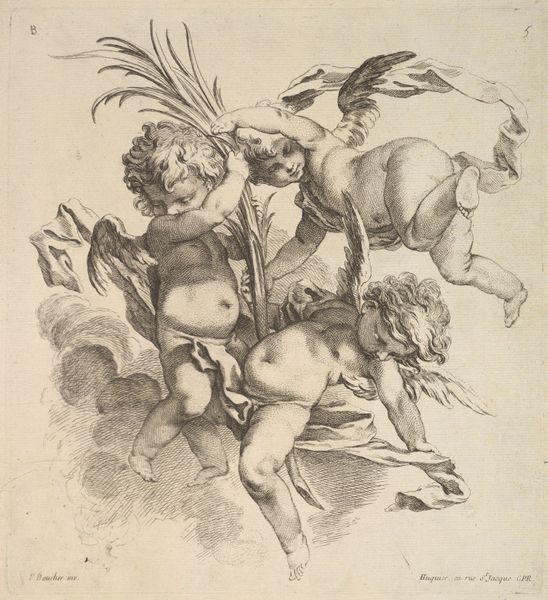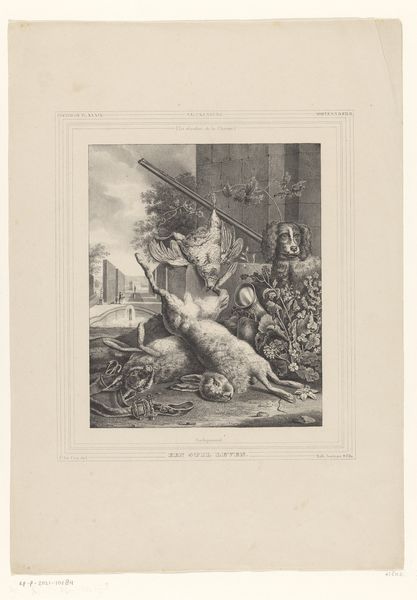
print, etching, engraving
#
neoclacissism
#
allegory
# print
#
etching
#
classical-realism
#
figuration
#
history-painting
#
nude
#
engraving
Dimensions: 270 mm (height) x 175 mm (width) (plademaal)
Curator: Immediately striking, isn't it? The stark contrast of the engraving amplifies the unsettling energy. Editor: Indeed. We're looking at "Fortuna," a work created between 1796 and 1802 by M. W. Schmith. It resides here at the SMK, Statens Museum for Kunst, rendered in print, specifically etching and engraving. It very clearly participates in the Neoclassical movement with a pronounced invocation of Classical Realism, though pushing things into some very bizarre and fascinating spaces. Curator: Precisely! The allegorical figure dominates, of course, poised precariously. Do you get a sense of instability and transience? Editor: Absolutely, her nakedness lends her vulnerability. The figures reaching for her feel desperate, almost grotesque, and the bag of riches suggests something about the random and, perhaps even the ugly nature of wealth distribution. Curator: It is not lost on the audience that the goddess appears aloof as a force in historical dramas. And the overturned table adds another layer, an upside-down world if you will. Schmith masterfully uses established symbols, and in this particular rendering he reminds me a bit of what Blake was up to at the time with that focus on symbolic revolution. Editor: Well, here, this feels different because the piece has that odd detached neutrality one often finds in Neoclassicism. Do you think it challenges the idea of historical narrative by focusing solely on the caprice of fate? Almost denying the importance of actors within those narratives? Curator: That is part of why it retains its symbolic power. By detaching from the moment, it allows a longer tail in our consideration of the politics and performance of fortune itself as an ideal and force, however chaotic, at any time, in any culture. We are always caught in Fortune’s orbit and struggle. Editor: Yes, but what statement, then, is Smith making on institutions, or societal powers, with Fortuna reigning as so handsomely, so calmly chaotic? It challenges the viewer to reconcile the classical beauty with the starkness of fate. Is he suggesting the political classes have little to do with wealth distribution itself? Curator: Possibly! Or even worse. Smith is pointing to the institutions themselves AS capricious and dangerous… which then sets loose whole other chains of interpretations! And how each age embraces or avoids those interpretations really says something, I think. Editor: Ultimately, the artwork offers a complex, unsettling meditation on wealth and the powerful illusion that shapes it, using historical cues for a new vision. Curator: Exactly. A stark reminder that while some things change, the dance with Lady Fortune continues across time.
Comments
No comments
Be the first to comment and join the conversation on the ultimate creative platform.
